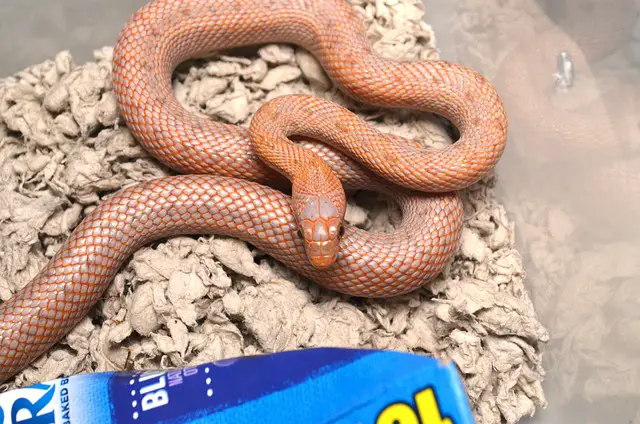When most people think of natural selection, they think of the process by which organisms evolve over time. However, natural selection can also refer to the way that populations adapt to their environment. Rat snakes provide a perfect example of how adaptation works. This blog post will explore the process of adaptation and how rat snakes have evolved to survive in their environment.
Introduction
Rat snakes are well-known examples of natural selection in action. These long, slender snakes have developed a range of adaptations that help them to thrive in their natural environment.
For example, they have elongated bodies that allow them to easily navigate through dense undergrowth, long tails that act as rudders on agile crawls, and coloration that helps them to blend seamlessly into their surroundings.
What’s more, they also have exceptional hunting skills and strong senses of smell, letting them successfully hunt down prey like rodents and birds even when visibility is poor. Overall, these adaptations make rat snakes an excellent example of how natural selection has shaped the evolution of species over time.
As such, they continue to be valuable tools for studying the mechanisms behind evolutionary change.
What is natural selection?
Natural selection is one of the basic mechanisms of evolution, along with mutation, migration, and genetic drift. Simply put, it is the process by which beneficial heritable traits become more common in a population, while deleterious traits become less common.
The process of natural selection relies on three key components: variation, inheritance, and differential fitness. Variation refers to the fact that individuals within a population vary in their traits. Inheritance means that these traits can be passed down from one generation to the next.
And differential fitness means that some individuals are better equipped to survive and reproduce than others. When these three factors are present, natural selection can occur. Over time, the unworthy members of a population will be weeded out, while the fittest individuals will thrive and pass their genes on to future generations.
As a result, natural selection is one of the main forces driving evolution.
How are rat snakes an example of natural selection?
Rat snakes represent an excellent example of the process of natural selection. These snakes are medium-sized predators with strong hunting abilities, and they feast primarily on a variety of small rodents.
The rats that make up their natural prey base tend to breed rapidly, outpacing the abilities of rat snakes to catch them. As a result, rat snakes that are particularly fast or able to escape quickly through small holes tend to survive better and pass these traits on to their offspring.
Over time, this creates populations of rat snakes that have evolved into faster and more agile creatures, reflecting their environment and enabling them to be more successful hunters. Thus, the rat snake provides a clear illustration of how the forces of natural selection shape animal populations over time.
Conclusion
Rat snakes are a prime example of natural selection in action. These animals have many adaptations that allow them to thrive in a wide variety of habitats, from forests and grasslands to urban and agricultural areas. Their coloration and markings help them to camouflage themselves within these different environments, allowing them to hunt for prey without being detected.
Additionally, rat snakes have long, slender bodies and narrow heads that aid their ability to maneuver through dense undergrowth and other treacherous terrains. And perhaps most impressively, rat snakes are able to regulate their internal temperature by either moving toward warmer or cooler sources of heat, making them especially well-suited for living in regions with varying weather patterns. Through all of these adaptations, rat snakes showcase the power of natural selection in shaping the evolution and survival of different species.
FAQ’s
What is natural selection?
Natural selection is a process by which beneficial heritable traits become more common in a population, while deleterious traits become less common. The process of natural selection relies on three key components: variation, inheritance, and differential fitness.
How does natural selection work?
When the three factors of natural selection are present (variation, inheritance, and differential fitness), the unworthy members of a population will be weeded out over time, while the fittest individuals will thrive and pass their genes on to future generations. As a result, natural selection is one of the main forces driving evolution.
What are some examples of natural selection?
Some examples of animals that have undergone natural selection include rat snakes, which have become faster and more agile hunters over time, and Darwin’s finches, which have evolved different beak shapes to adapt to different food sources.
What is the difference between natural selection and evolution?
Natural selection is a process that drives evolution. Evolution is the change in heritable traits of a population over time. So, while natural selection is responsible for shaping the evolution of a species, it is not the same thing as evolution itself.




